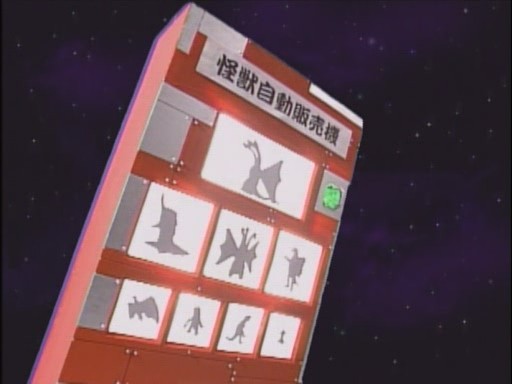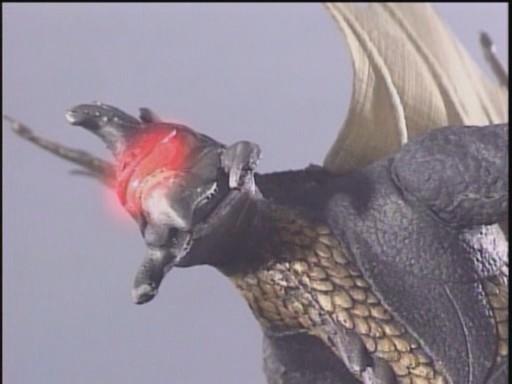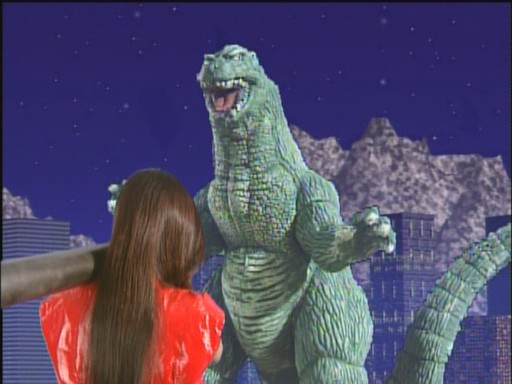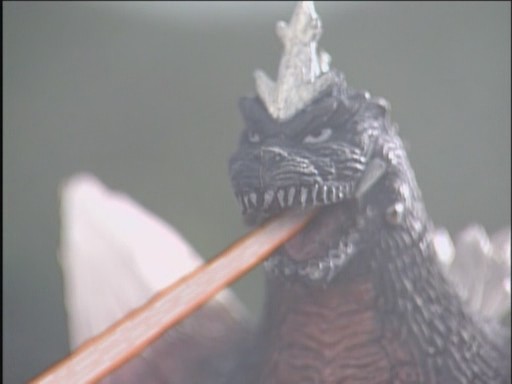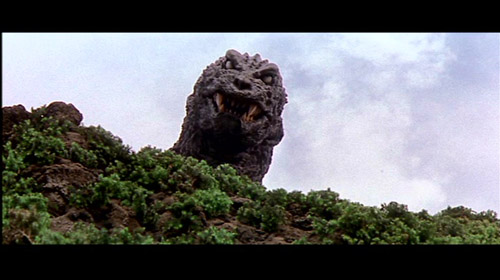


Godzilla, Mothra and King Ghidorah: Giant Monsters All-Out Attack
aka Gojira, Mosura, Kingu Gidora: Daikaiju sokogeki

2001

Starring
Chiharu Niyama as Yuri Tachibana
Ryudo Uzaki as Admiral Taizo Tachibana
Masahiro Kobayashi as Teruaki Takeda
Shiro Sano as Haruki Kadokura
Eisei Amamoto (Hideyo Amamoto) as Professor Hirotoshi Isayama the Prophet
Mizuho Yoshida as Godzilla/Gojira
Akira Ohashi as King Ghidorah
Rie Ota as Baragon
Directed by Shusuke Kaneko

Godzilla, Mothra and King Ghidorah: Giant Monsters All-Out Attack aka GMK aka Gojira, Mosura, Kingu Gidora: Daikaiju sokogeki aka Godzilla, Mothra, King Ghidorah: The Giant Monsters’ General Offensive (the literal title) has a reputation of being one of the better entries in the series. This couldn’t be further from the truth. GMK is one of the worst entries, in my opinion THE worst film of the whole series. Biollante? Megalon? The Smog Monster? They are three Citizen Kanes compared to GMK. Director Shusuke Kaneko became famous for making the highly regarded modern Gamera films, and was given a chance to make a Godzilla film. His original concept would have been far superior, but Toho screwed around with his monster choices, and that combined with stylistic touches I don’t really care for ended up melting into a nasty soup of disflavor. We shall go over some of the origins of the film before we get to the story, and deal with the problems in their appropriate areas.

Godzilla X Varan, Baragon and Anguilus: Giant Monsters All-Out Attack would have been a neat film. It would have eliminated one of my major criticisms of this film, the complete role reversals of several established monsters. It also would have provided a reappearance of Varan after many years (last seen briefly as a ratty costume in Destroy All Monsters), Anguirus returning (who hadn’t been seen since Godzilla vs. Mechagodzilla), and Baragon (who made it into the final film.) Varan was actually director Shusuke Kaneko’s favorite monster, but he ended up keeping Baragon in the final product, and changing Ghidorah’s face to resemble the old Varan costume. Also, rumor is the Gotengo from Atragon would have also appeared (it ended up reappearing in Godzilla: Final Wars, alongside Anguirus) and lots of maser tanks (the tanks with the satellite dishes that shoot lasers.) But as Varan and Baragon were not box office bankable, something Toho was more worried about after the failures of Godzilla 2000 and Godzilla vs. Megaguirus; and after Kaneko’s own friends had no idea who Anguirus and Varan were (I don’t know if they knew who Baragon was) he decided to drop them in favor of the pushed by the studio King Ghidrah and Mothra. This provided a small wrinkle storywise. Okay, a huge wrinkle. The plot of the film is about Godzilla attacking, being the souls of the dead from World War 2 out for revenge. Japan would then be defended by three guardian creatures, which were weaker than Godzilla but teamed up their power. Since Mothra and King Ghidrah can both hold their own against Big G, they had to modify them a bit to make them smaller and weaker looking. Also, that meant Ghidrah was a hero for the first time ever, something I do NOT agree with. The monsters end up not being much of team players, with only Mothra doing things to help anyone else.

So now Godzilla, instead of being treated like a force of nature, is now a malevolent force of destruction. He doesn’t even have pupils anymore, to give him a more sinister look. I kind of find that annoying, but it fits in with the intended storyline, so I let it go. He also has a hunched back and pot belly, which is a tad harder to let go. Hit the gym, Big G! As a film in the Millennium series, it is free to rewrite continuity however it sees fit. Still, some things shouldn’t change, like character allegiances. The success of the film prompted Toho to continue making a few more G films, so some good came out of it. Just because I like it the least doesn’t mean I won’t watch it, but when given a choice between chocolate and chocolate with peanut butter, you take the C&PB every time. Plus, I lied earlier, this cannot be the worst Godzilla film, as thanks to this and Godzilla Final Wars, the American Godzilla is now part of the canon, making it the worst film. Hopefully some enterprising young student makes their own fan film of Godzilla X Varan, Baragon and Anguilus: Giant Monsters All-Out Attack, with which we can live on vicariously until Toho decides to start pumping out more Big G films again.

![]()







